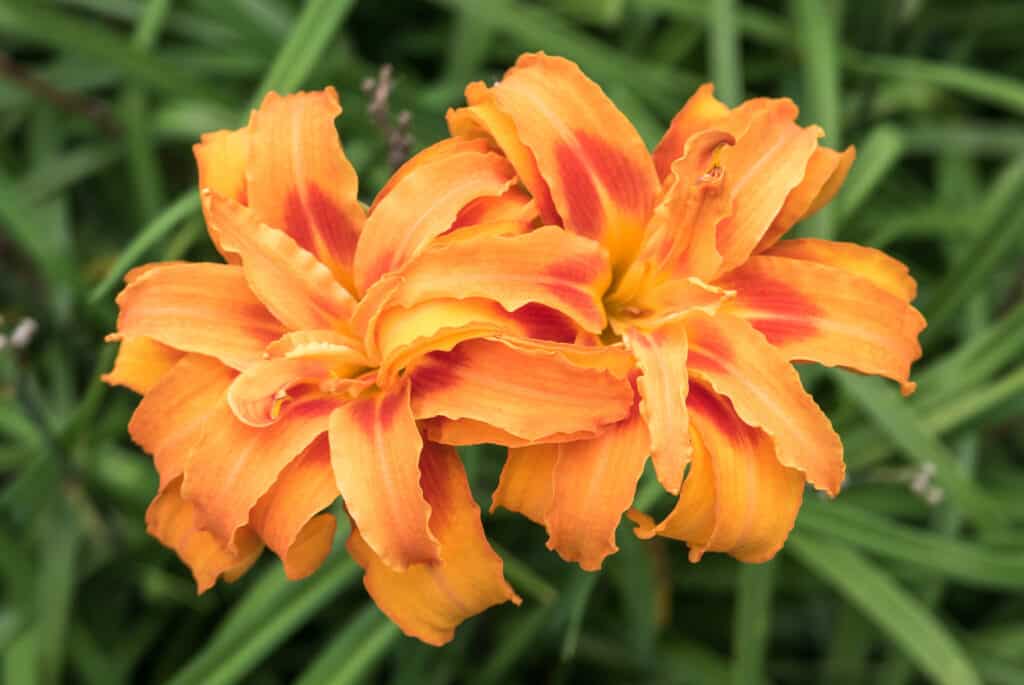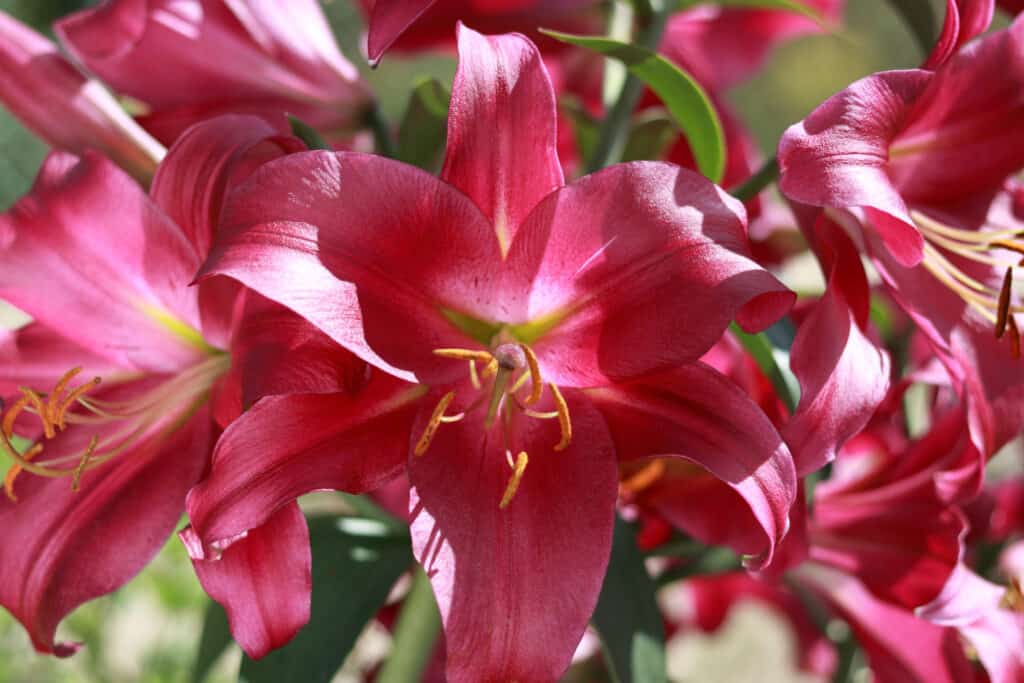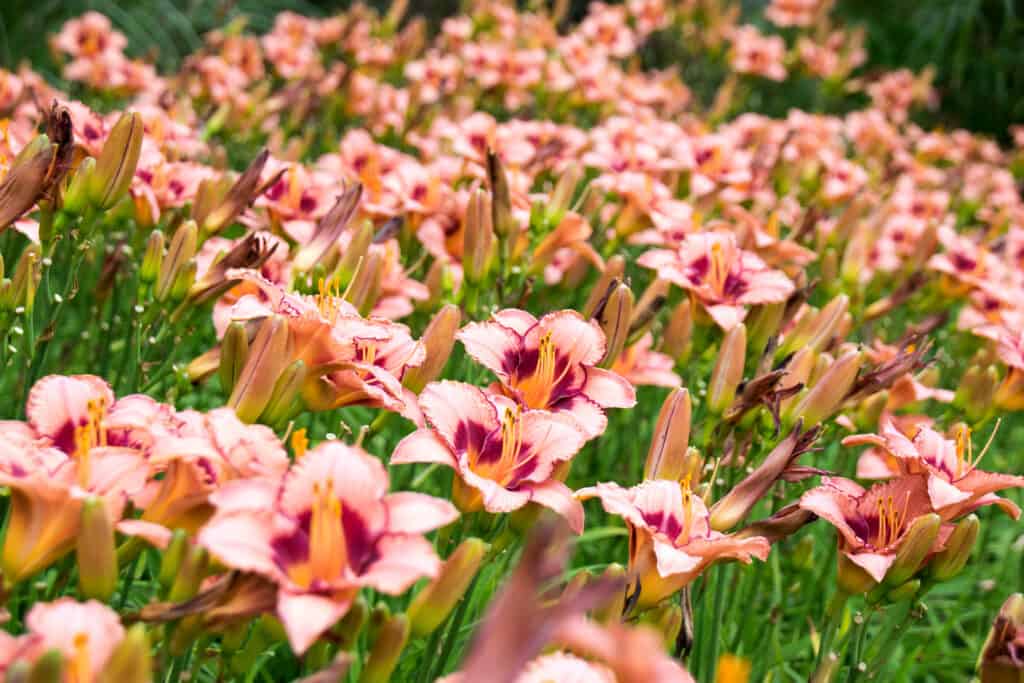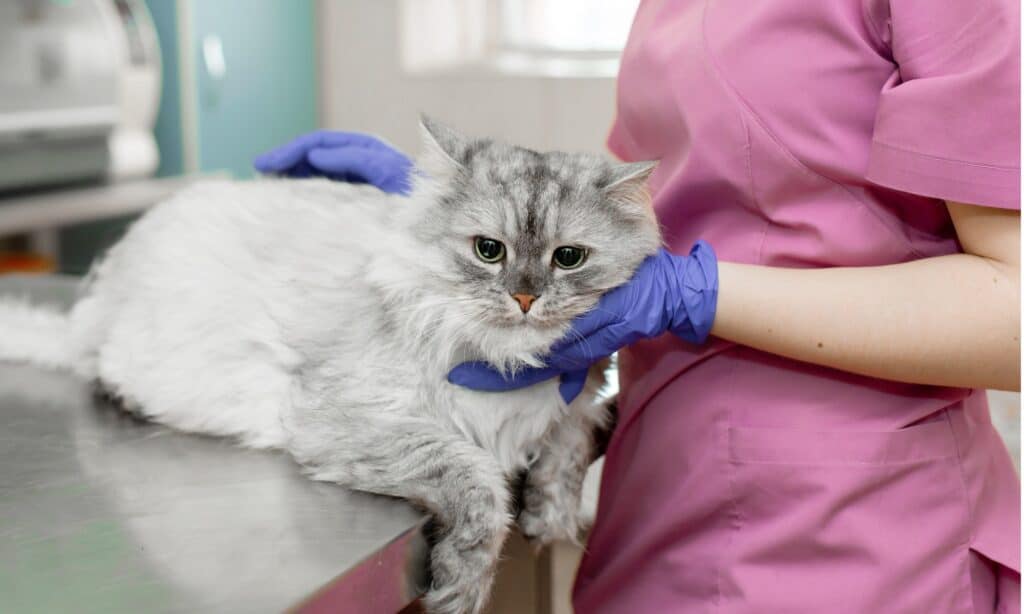Popular lily varieties for gardens worldwide include the beautiful and beloved daylilies and Asiatic lilies. Between daylilies and other types of lilies, there are both parallels and distinctions. One of the simplest lilies to grow is the Asiatic kind. Asiatic lilies are a vibrant addition to any garden and are exceptionally resilient, soil-type indifferent, and stake-free. Daylilies are frequently referred to as the ideal perennial because they require little upkeep and can grow in practically any type of soil. The care and cultivation of daylilies and Asiatic lilies are similar, yet they differ greatly in other ways.
In this guide, we’ll break down the key differences between these two beloved flowers.
Comparing Asiatic Lily vs. Daylily
| Asiatic Lily | Daylily | |
|---|---|---|
| Classification | Lilium spp. | Hemerocallis spp. |
| Alternative Names | Numerous variety names, such as Ladykiller and Bright Beauty | Day Lily |
| Origin | China, Japan | Asia |
| Description | A hybrid member of the lily family that forms vertical cup-shaped flowers. | A perennial flowering plant that is not actually a lily, but an entirely different plant with thousands of cultivars. |
| Uses | This lily is mainly used as a decorative flower in landscaping, home gardens, flower arrangements, etc. | Mainly used as a decorative flower, but can also be used medicinally as a laxative and diuretic. |
| Growth Tips | Fertilize in the springtime to boost growth. | Plant in full sun or partial shade, and prune dead leaves regularly. |
| Interesting Features | This plant was created by cross-breeding around 12 species of lilies. | Grows from a rhizome, rather than a bulb like Asiatic lilies. There are 16 species and thousands of varieties of the daylily. |
The Key Differences Between Asiatic Lily and Daylily
Asiatic lilies and daylilies are completely different plants. To start, Asiatic lilies are actually lilies, while daylilies are not lilies at all despite their common name. Daylilies are able to grow in all agricultural hardiness zones in the United States, while Asiatic lilies can only grow in Zones 3 through 10.
Asiatic lilies are grown via bulbs and only have single stems, while daylilies are grown via tuberous roots and have multiple stems. Asiatic have non-layered petals and six anthers, while daylilies have layered petals and two anthers. The leaves of the Asiatic lily form a spiral-like shape along the stem, while the daylily’s leaves form flat blades near the soil line. Asiatic lilies form trumpet-shaped blooms that appear round or funnel-like, while daylilies form blooms that can be circular to triangular to pointed in shape. Asiatic lilies take about a week to bloom, while daylilies only require a single day.
With these differences in mind, daylilies and Asiatic lilies do have some similarities. They both have six petals per bloom and approximately six stamens, though daylilies can grow up to seven stamens. Just as well, both of these plants are used ornamentally for their beautiful flowers.

Asiatic lilies are grown via bulbs, have single stems and form trumpet-shaped blooms that appear round or funnel-like.
©iStock.com/Aneese
Asiatic Lily vs. Daylily: Classification
Asiatic lilies are classified as Lilium spp. and are part of the Liliaceae family. They are related to hundreds of other flowering plants in this plant family. Daylilies are classified as Hemerocallis spp., part of the Asphodelaceae family. They are related to succulents.
Asiatic Lily vs. Daylily: Description
Asiatic lilies are considered true lilies of the genus Lilium. The trumpet-shaped flowers occur in practically every color imaginable. Bright, showy blossoms are excitingly contrasted with the pointed, stark-green leaves. Hybrid Asiatic lilies are frequently multiplied using bulbs. They are more resilient and almost trouble-free, and bloom earlier and longer than other lily kinds. These gorgeous perennials have a maximum height of five feet.
Daylilies are part of the genus Hemerocallis. Members of this genus produce short-lived funnel-shaped or bell-shaped blooms with long-stalked clusters that range in color from yellow to crimson. They have a one-day blooming period, therefore their name. In addition, daylilies have thick roots and sword-shaped, narrow leaves that are gathered at the plant’s base. The fruit of the daylily is a capsule. Daylilies can also be used medicinally as a laxative when boiled into tea.

Daylilies form blooms that can be circular to triangular to pointed in shape.
©iStock.com/lrosebrugh
Asiatic Lily vs. Daylily: Uses
Asiatic lilies are mainly employed in floral tasks like flower arrangements and flower gardens. The usage of ground lily bulbs combined with honey for therapeutic purposes during the Middle Ages included the treatment of illnesses, snake bites, baldness, and wrinkles.
Like Asiatic lilies, daylilies are mostly used as ornaments. They are not only a lovely and low-maintenance perennial, but they are also quite helpful in tricky weed situations. Many daylily types are utilized as colorful groundcover and weed prevention because they spread quickly.
Asiatic Lily vs. Daylily: Origin
As the name implies, Asiatic lilies are indigenous to Asia and are grown there in many countries, most notably in China and Japan. Despite being quite appealing, lilies in general and Asiatic lilies, in particular, have a reputation for being among the most challenging garden plants to grow. One of the first hybridizers who set out to create tougher, trouble-free lily cultivars was Cornelius de Graaf. His great-grandson Jan de Graaf worked tirelessly for decades, and the result was the Asiatic lily’s spawn.
Nearly the entire Asian continent is home to daylilies. They arrived in Europe by the 18th century, where plant aficionados rapidly took to them. Daylily tubers were transported to the New World by European colonists, and by the early 1800s, the flowers had become native to their new environment.

Asiatic lilies are mainly used as a decorative flower in landscaping, home gardens and flower arrangements.
©iStock.com/Mariia Romanyk
Asiatic Lily vs. Daylily: How to Grow
Growing and planting Asiatic lilies is not too difficult. Planting in the late summer or fall enables the bulb to develop a strong root system prior to starting to grow the following spring. In loose, well-drained soil in sun to partial shade, Asiatic lilies thrive. Bulb rot is more likely when they are left in wet soil. By incorporating compost or other organic material into the garden bed, you can change the soil’s makeup.
Plant bulbs flat end down, three times as deep as the height of the bulb. In order to promote larger blooms, some gardeners suggest top-dressing the soil with fish emulsion or compost tea in the spring. As the blossoms on Asiatic lilies deteriorate, remove them. The old leaves assist the bulb to acquire nutrients for the flowers of the following year, so keep the foliage in the bed until it becomes brown. Asiatic lily bulbs can also be planted in containers in the winter for blooming in the spring.
The best daylilies are those that are grown in full sun with moist yet well-drained soil. Dark-colored varieties should get some afternoon shade in hot regions to keep their bloom color. Daylilies require little maintenance and will bloom for years when planted in the right spot. They only need an annual addition of compost for fertilizing. Daylilies should be planted in the North in the spring so they have plenty of time to establish themselves before winter. However, because daylilies are such hardy plants, they may often be planted anytime from spring through October in the North.
Before planting, add compost to the soil. Plants should be spaced 12 to 18 inches apart, with the crown positioned approximately an inch below the soil’s surface. To keep moisture in the soil and stop weeds from growing, water thoroughly and cover the mulch with bark or straw. Young transplants should be kept weed-free and well-watered for the first year even though they are resilient once they are established.

Daylilies require little maintenance and will bloom for years when planted in the right spot.
©iStock.com/ananaline
Asiatic Lily vs. Daylily: Special Features
Asiatic lilies are cultivated for their nearly perfect, brightly colored blossoms, which can reach a diameter of six inches. A few cultivars have a faint scent, but most don’t. The Asiatic lily attracts lots of different types of insects with its vibrant blossoms and sweet nectar, making it the perfect plant for pollinators. Some lily species are pollinated by the wind, while others are by bees.
Daylilies are known as one of the most adaptable plants on the planet, as they can withstand virtually any hardiness zone. In addition to being temperature-adaptable, they also do well in a variety of climates. They work effectively in both chilly, damp areas and hot, dry ones. Since daylilies spread quickly, almost any variety can be used to stabilize soil. Daylilies are believed to come in over 80,000 different types, and new ones are being created every year.
While the daylily and Asiatic lily might be very different types of flowers, they are both popular in flower arranging and ornamental growing for a reason. These flowers are absolutely stunning when in full bloom. If you want to plant a flower garden that can really stun a spectator, then consider planting both Asiatic lilies and daylilies in your garden.
Bonus: Lilies Are Highly Toxic to Cats

Cats that ingest any part of a lily should be rushed to the vet immediately to prevent kidney failure.
©iStock.com/Kateryna Kukota
Lilies are lovely flowers that often attract the curiosity of our feline friends. Unfortunately, cats can die from ingesting the tiniest pollen grain that has fallen on its coat during grooming. The entire plant is toxic – stem, leaves, flowers, pollen, and even water in a vase. The toxin only affects cats and causes minor stomach upset in dogs. Cats will develop fatal kidney failure within three days if they aren’t treated by a vet immediately.
Early signs of lily toxicity include decreased activity level, drooling, vomiting, and loss of appetite. These symptoms can start right after ingestion and damage kidneys within 12 to 24 hours. Kidney failure can begin within 24 – 72 hours. Treatment delayed by 18 hours or more has less chance of reversing kidney failure caused by lily toxins and can lead to death.
The photo featured at the top of this post is © svf74/Shutterstock.com
Sources
- Gardenia, Available here: https://www.gardenia.net/guide/asiatic-lilies
- NC State Extension, Available here: https://plants.ces.ncsu.edu/plants/hemerocallis/
FAQs (Frequently Asked Questions)
Are Asiatic lilies and daylilies the same plant?
Not at all. They are two very different flowers with different genus and species, though they have similar characteristics.
Do both daylilies and Asiatic lilies grow from bulbs?
Asiatic lilies grow from bulbs, while daylilies grow from tuberous roots. Daylilies also have multiple stems, compared to Asiatic lilies which only have one per bloom.
Are there any similarities between daylilies and Asiatic lilies?
There are a few, actually. Both the daylily and the Asiatic lily have six petals and six (or more, for the daylily) stamens. Both plants also have similar care and growth requirements.
Thank you for reading! Have some feedback for us? Contact the AZ Animals editorial team.






